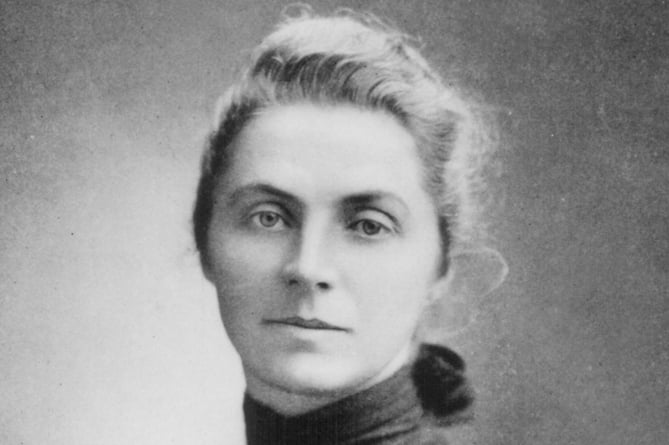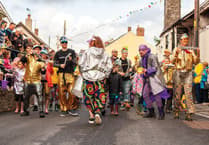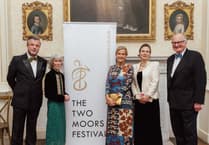The Hobhouse rectory sits a short distance back from the main road through the village of St Ive, behind a low Cornish hedge. The stunning transformation of the former home of Emily Hobhouse in its gothic revival style designed by William White, is the first glimpse of the story of Emily.
Her quest for a purpose in life is revealed in this compelling immersive experience which charts two significant periods of the life of this extraordinary Cornish woman. She ultimately found that purpose in the Anglo-Boer war but let’s go back to the beginning.
Emily Hobhouse was born the daughter of the local Anglican priest and first Archdeacon of Bodmin, Reginald Hobhouse in 1860. She grew up one of six siblings, her mother the daughter of Sir William Lewis Salusbury-Trelawny; it was a life of landed gentry at St Ive, with a strong sense of community for her parish.
The immersive experience at St Ive rectory
Her family home until the death of her father in 1895 when Emily was 34, the rectory and its grounds have been restored by private investors to reflect the life she would have led there, aged 15. Without photos and just architectural drawings, the restoration has relied on advice from experts and an essay written by Emily’s sister Maud.
Ringing the long door bell chain at the entrance, smartly uniformed staff usher you into the Hobhouse home. Swapping outdoor shoes for Victorian slippers, you are invited to walk in the footsteps of the Hobhouse family. Headphones track your movements from room to room providing descriptions recreating scenes of Emily's childhood.

A contemplation garden at the front of the house, a walled kitchen garden and outhouse with stables just as they would have been. An outside privvy for the men and servants, and chamber pots in the house for the ladies; small details yet reminders of Victorian life.
Glancing out of an upstairs window overlooking the grounds, it’s hard to imagine how stifled Emily was by this rural idyll. She talked about ‘escaping the shackles of St Ive’, yearning to go to school like her brothers; to have access to tutors who could tell her all about the world outside the village.

Nestled in the trees beyond a stylish restaurant, a large incongruous building holds the key to Emily’s life after her father's death, after she auctioned off the rectory to search for her life’s purpose. Stepping over the threshold of the War Rooms, and into yet more shoes, authentic South African Veldskoen, you step onto a different continent, with a dramatic shift in mood.
At a time when women were fighting for emancipation, and Britain’s influence in the world was seemingly limitless, the drive to colonise the gold mines of the Transvaal is evident in the newsprint adorning the walls and rolling continually across the ceiling. Britain and South Africa were on a war footing. Emily, a Liberal and pacifist at heart was about to take on the might of the British Empire.

Every aspect of the completely immersive 1 hour and 45 minute guided tour through the War Rooms is planned to perfection. Even the box of tissues that greets you at the end.
It’s a sensory journey back in time to the Anglo-Boer war, and Emily’s part in steering a course that ultimately saw her revered by the South Africans and Boer families and labelled ‘that bloody woman’ and a traitor by the Victorian British establishment.

The Boers, farmers migrated from Europe were fighting a war the British thought they could easily win. In reality the Boers who had made South Africa their home were not ready to concede to the British armies and their insistence led to the implementation of a British policy of scorched earth. Boer homesteads were razed to the ground, livestock and crops destroyed, and women and children rounded up in concentration camps.
Emily was a whistleblower in the Anglo-Boer war. Each room in the building at the bottom of the garden, interweaves a narrative of Emily’s struggle for justice for the Boer families as their men fought. Using state-of-the-art technology, each story told transports you back in time to the very epicentre of the war.
‘Peter Palmer’, a Somerset recruit to the Army who finds himself fighting the Boers; the De La Rey family, living their daily Boer family life on a rural homestead as they share food, and how the war came to shatter their peaceful existence.

The homestead veranda surrounded by the sights, sounds and heat of the steppe. Served with real coffee and rusks, it’s a place to sit and reflect watching the cattle and horses while contemplating the garden with real fig trees - all feeling surreal yet peculiarly real.
Train compartments shudder down the track, as Emily, Secretary of the South African Conciliation Committee in 1901 has decided to come to Africa to discover for herself the horrors of what she is hearing at home, and vowing never again to eat apricot jam; it sustained her on her arduous five-day train journey from Cape Town to Blomfontein through a landscape of devastation.
Projections on walls show the battles that raged as the Boer farmers fought to keep what was theirs. 30,000 farms were annihilated, tens of thousands of women and children languished in squalid camps, and perished. The heat of the day too hot in their tents, and the rain bringing floods, and the endless waiting for water, for food, for release.

The gut retching death of young Daniel in a camps via a VR headset; depths of grief beyond all tears as a woman stares without expression into the distance, distraught, cradling her dying child. Each step, from room to room, leads you on Emily’s journey from the camps back to Britain to report her findings which ultimately forces Parliament to sit up and listen.
The injustice is cruel and shockingly tactile as the latter stages of the experience chart her dying quest to regain her name. Until her death she is depicted as Pro-Boer and a traitor by her home country, yet revered and a heroine by the country that adopted her as one of their own.
The National Women’s Monument unveiled at Bloemfontein honours the dead from the concentration camps. In a speech, read out at its unveiling; a speech that she couldn’t carry out in person due to her failing health, Emily asks the crowds to forgive England. In total more than 34,000 women and children died in the British concentration camps, and between 15,000 and 25,000 native Africans - mostly children.

Thirteen years later Emily’s ashes were interned in the monument, and tens of thousands attended a state-like funeral to honour her bravery, her humanity and her life’s work in South Africa.
The story of Emily is not just an immersive experience, but an emotive assault on the senses with every single footstep, building to a deafening crescendo at the injustice of it all. Even as she is lying on her death bed, she yearns for her name to be restored.
The box of tissues was particularly appropriate.

The Story of Emily is holding two Victorian Cornish Christmas events on December 14 and 15 including cookie decorating, carol singing, Cornish Kissing Bunch workshops and much more. For information go to their website: https://thestoryofemily.com/victorian-christmas





Comments
This article has no comments yet. Be the first to leave a comment.